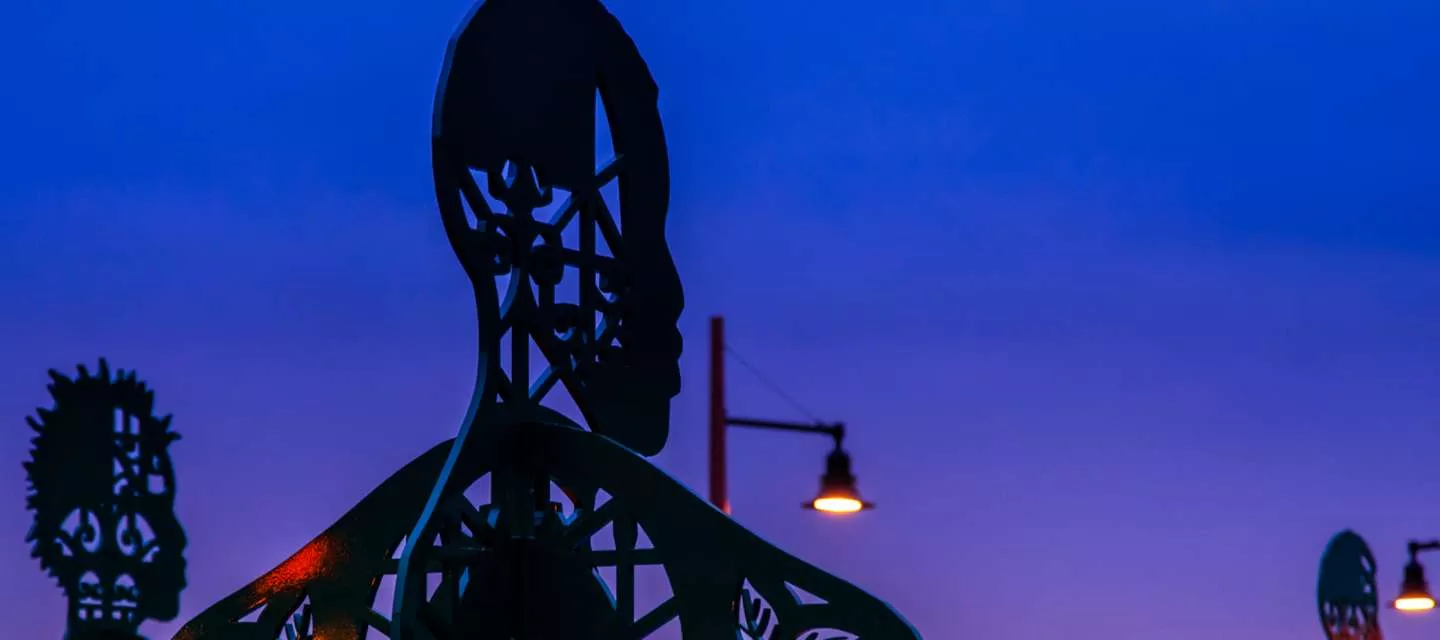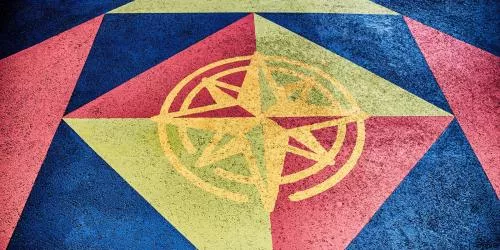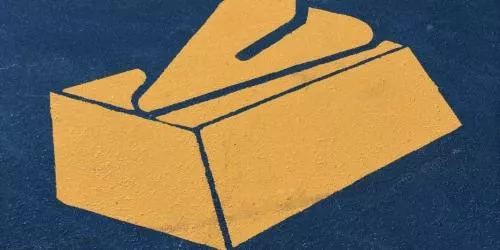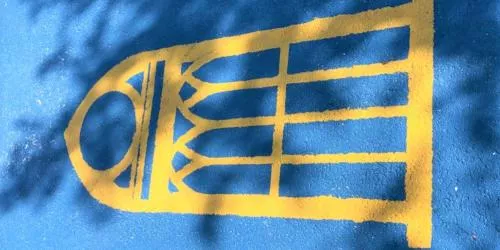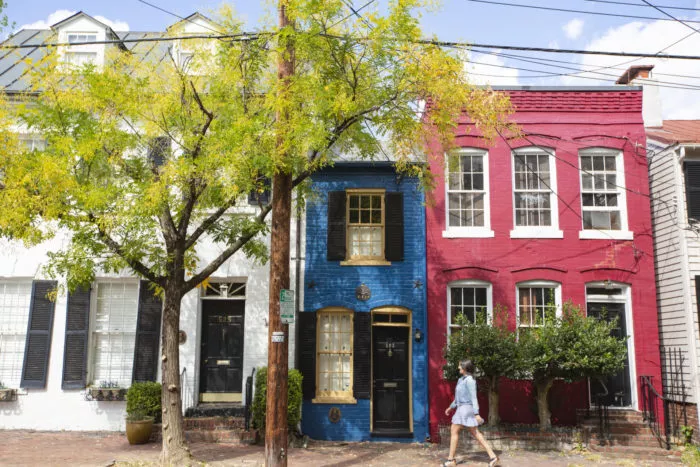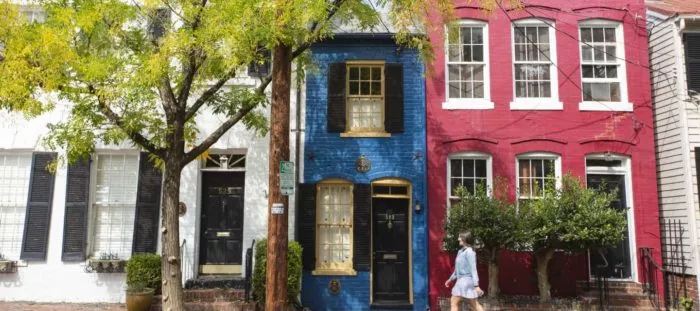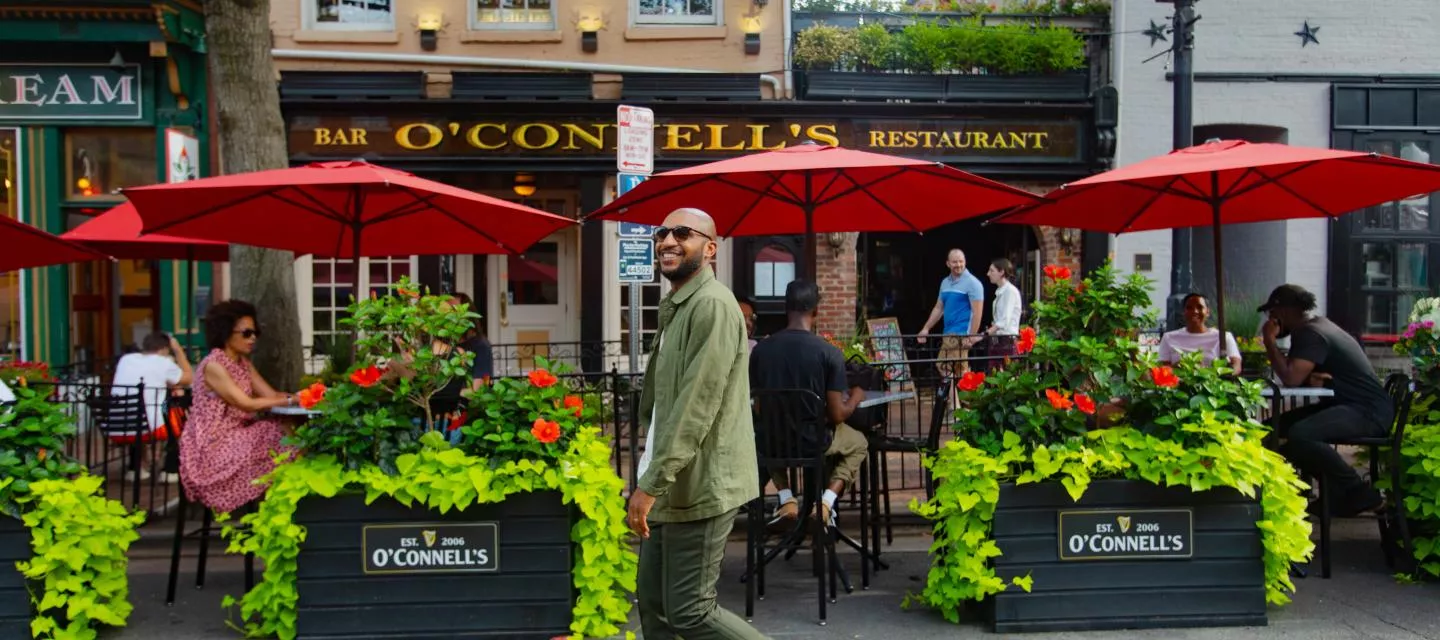See how Wrought, Knit, Labors, Legacies stitches Alexandria’s story together, featuring symbols that represent Alexandria’s merchant and manufacturing history, including factories, tobacco warehouses and railways. The ground mural at the waterfront location incorporated African American quilting and textile traditions, which are historically tied to storytelling and oral tradition. When viewed as a whole, the pattern became an abstract grid or map, with the manufacturing icons appearing throughout. From the ground rise four ornate metal figures wrapped in illuminated sculptural seating.
Art Installation by Olalekan Jeyifous
New Temporary Location: 1609 Cameron Street, Alexandria, VA
The second of the City of Alexandria’s Site See: New Views in Old Town annual public art series, Olalekan Jeyifous’ Wrought, Knit, Labors, Legacies, has been relocated from Waterfront Park to 1609 Cameron Street to remain on display while on temporary loan from the artist. The installation frames Alexandria’s African American history through the lens of the city’s industrial and merchant history from the 17th to 20th centuries. Once a prosperous port city and manufacturing hub home to one of the largest domestic slave trading firms in the country, Alexandria’s early economy was inextricably tied to the work of enslaved and free African Americans.
Waterfront Public Art Series
Learn about the newest installation in the series and link to past installations.
About the Title
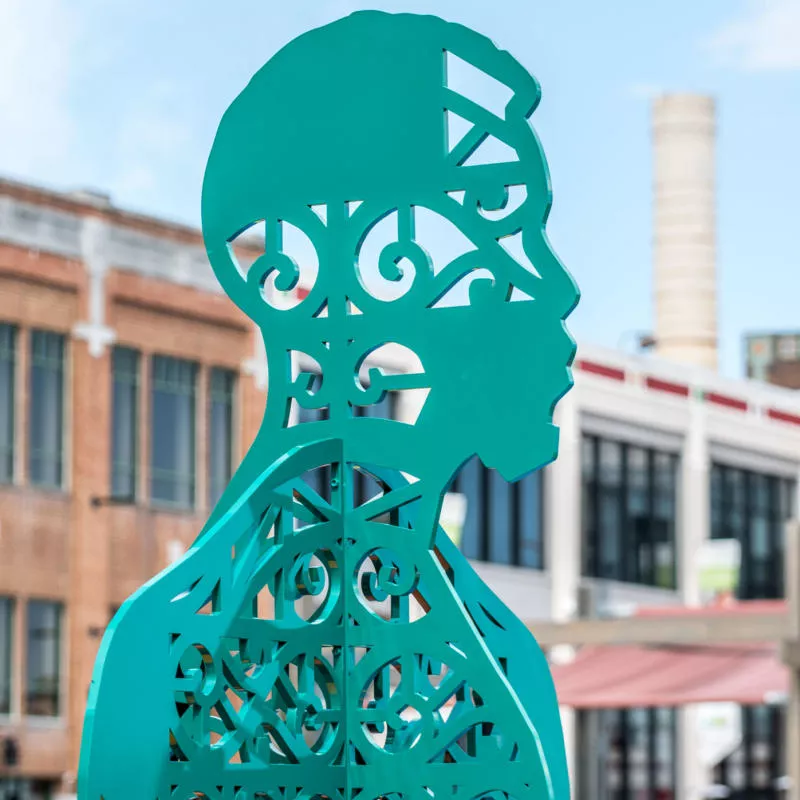
“Wrought” means shaped, hammered or manufactured, a reference to the sculptures in the installation. It holds dual meaning, also signifying transformation through adversity, struggle or hardship.
“Knit” means to weave, stitch or unite, a reference to the ground mural that is inspired by African-American narrative quilts. For this installation, it also alludes to the histories and futures of Alexandria’s communities, inextricably intertwined.
“Labors” and “Legacies” employ multiple meanings from enslaved labor to industrial labor to the general work it takes for communities to evolve and grow. They also speak to the cultural inheritances that shape and define the city as it continues to evolve.

Meet the Artist
Get to know Olalekan Jeyifous, the Brooklyn-based artist behind Wrought, Knit, Labors, Legacies.
His Story
I was born in Nigeria and raised in the U.S. My mother’s side is from the D.C. area. In my formative years, we moved to many different states. Adapting to new places, I often lost myself in worlds of my own making.
Finding Inspiration
My background is in architecture. I’m driven to explore culture, fictions, histories and futures of cities and spaces in whimsical and insightful ways.
Notable Works
I created a 50-foot-tall installation at Coachella 2017, and I’m designing a monument to Congresswoman Shirley Chisolm in Brooklyn with Amanda Williams.
Designed for Alexandria
I seek to capture Alexandria’s cultural, architectural and merchant history. Alexandria was one of the largest domestic slave-trading ports in the country. My playful, engaging and sometimes uneasy reflection on the triumphant and tragic aspects of history are a means for moving forward toward a more equitable tomorrow.
